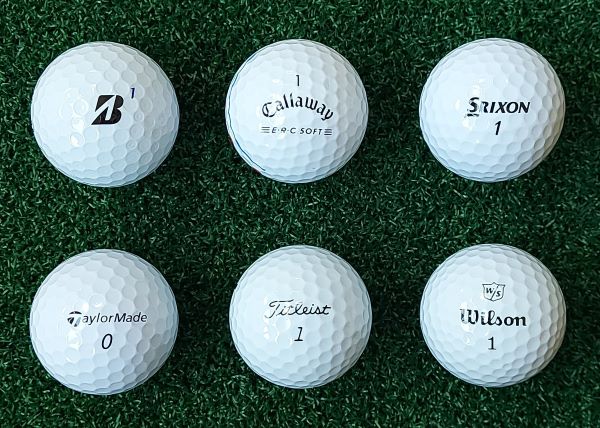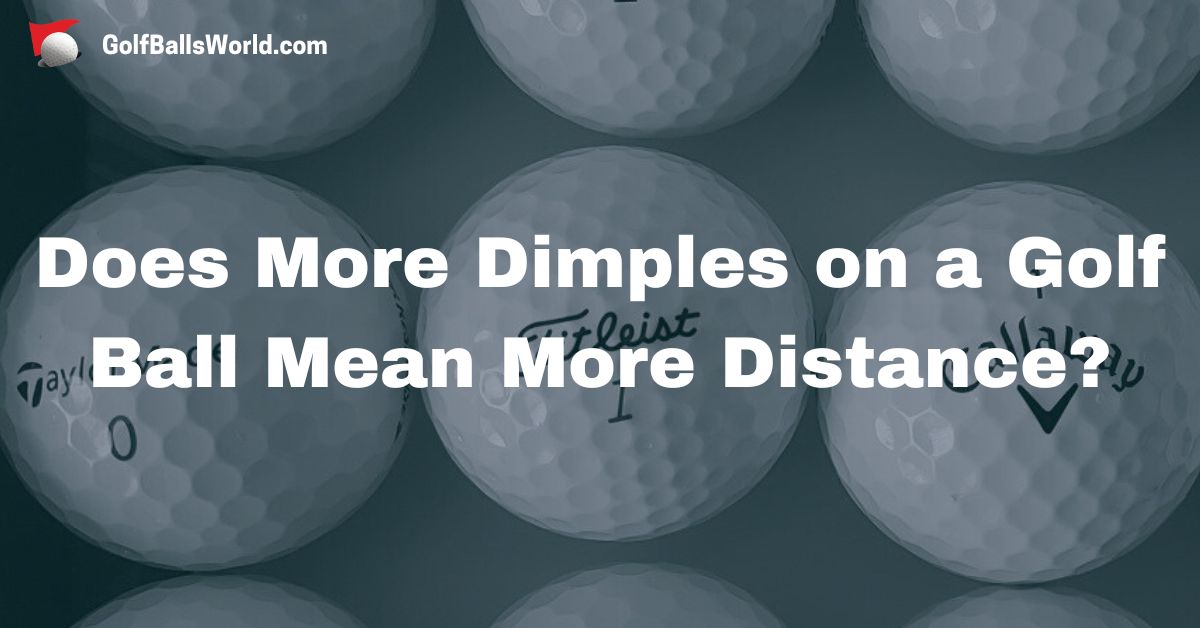Dimples on a golf ball have changed a lot throughout history. Nowadays all the ball brands have their own specific dimple patterns for their ball models. Their main role is to have the golf ball go up in the air and fly straight. But does more dimples on a golf ball mean more distance? That is the question I will answer below and say a few more words about what dimples do on a golf ball.
Does More Dimples on a Golf Ball Mean More Distance?
Briefly, more dimples on a golf ball do not mean more distance. Despite the impact dimples have on a golf ball, increasing their number will not contribute to the ball flying further. Factors like dimple depth and surface coverage influence the optimal number of dimples on a golf ball. Too many or too few dimples wouldn’t contribute to reaching the ideal aerodynamic properties needed for maximum distance. What is needed is a balance that achieves a reduction in drag and an increase in lift.
Manufacturers use different dimple patterns and put different number of dimples on balls, depending on what they want to achieve. In fact, several studies of trial and error have shown that the number of dimples can vary quite significantly while still providing excellent performance. Importantly, too many dimples could result in too much surface area and increased friction. Thus, it could potentially show the ball down. Also, not enough dimples might mean inadequate turbulence to keep the ball flying on a steady path.

The Role of Texture in Aerodynamics
There is a certain curiosity around golf balls when you see dimples all over them. Have you wondered what those small indentations do? They are key to making the ball travel further and straighter. Surface texture can influence the behavior of air molecules around an object affecting how it moves through the air. For example, with a smooth ball air flows around the ball shape and creates a high-pressure area in front and a low-pressure wake behind. All that increases drag and slows the ball down.
Dimples on a golf ball create turbulence in the layer of air around the ball, known as the boundary layer. This turbulence allows the air to cling to the ball’s surface longer compared to a smooth ball. Consequently, it decreases the size of the wake and thus reduces drag.
Besides reducing drag, dimples also increase lift. Lift helps golf balls to stay airborne longer giving them more distance. When you hit a golf ball, it spins, and the dimples work to channel air in a way that creates a pressure differential. The bottom of the ball experiences higher pressure than the top. That pushes the ball upwards and contributes to a longer, arching flight path.
Optimizing Golf Ball Performance
Dimple shape and size have a big impact on how the ball behaves during flight. Some shapes focus on reducing drag, while others enhance lift. Additionally, the dimple pattern is engineered to create a stable flight path and predictable ball behavior on landing.
Besides dimples, the core and cover type significantly influence the ball’s performance. The core can alter distance, stability, and feel upon impact. High-tech composites and varied core structures contribute to a ball’s responsiveness and control. The type of cover, which is usually urethane or ionomer, affects durability, feel, and spin. Modern golf balls are an engineering marvel and there is a right fit for all golfers.
Look Beyond Dimples
As much as dimples are an important component of golf balls, they are not the only thing you should pay attention to. When choosing a golf ball you should take into consideration the whole picture. Start with what you want from a golf ball and go from there. Do you want more or less spin? Is your focus on a higher or lower flight trajectory? Are you on a budget? Is your swing speed faster or slower? All those questions and more should be in focus when you are selecting a golf ball.
Luckily you don’t have to worry. There are so many choices of balls out there that you will find the one. When it comes to dimples, brands keep coming up with better and better designs. More dimples do not mean more distance, but without them the golf ball wouldn’t be a golf ball.
Do you have a preferred dimple pattern for your golf ball? Which golf ball do you play? Share below!

